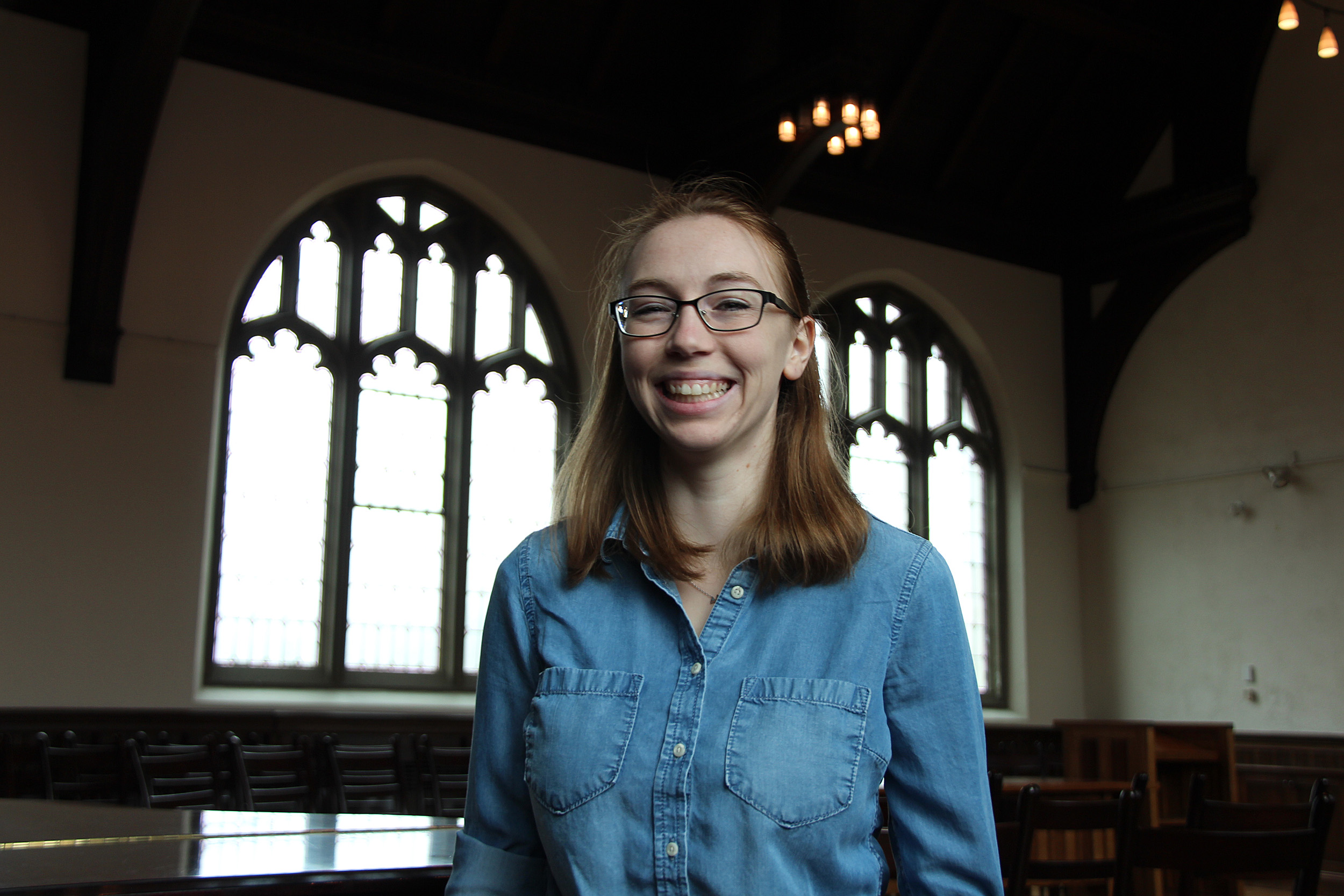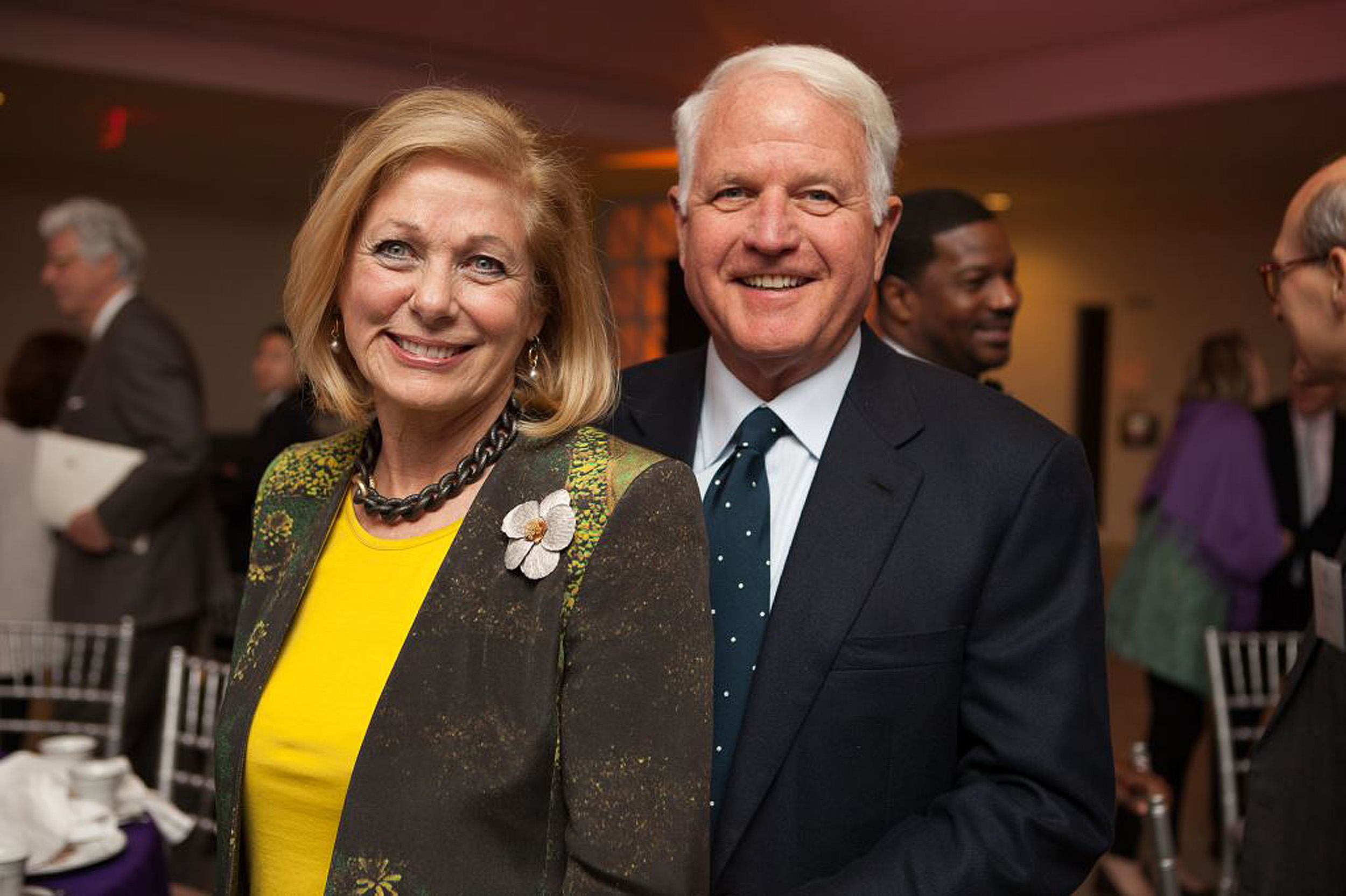
Courtesy of Harvard Divinity School
Biggest gift to Divinity School
Will be used to renew mainstay Andover Hall, transform campus life
Natalie Campbell, a student in Harvard Divinity School’s (HDS) Master of Theological Studies Program, needs more than a campus. She needs a kind of second home.
She commutes to class each day from Belmont and can’t easily go back and forth to School, so she often stays in Cambridge late into the evening. As a result, she needs a place not only to study, but where she can eat, relax, and connect with classmates. Unfortunately, she says those kinds of spaces are few and far between at HDS, particularly in the School’s main building, Andover Hall.
“Andover Hall is the center of campus, but it really isn’t equipped to be a center of the community,” she said. “I can walk around and see no one or maybe a sprinkling of people here or there, but there’s no central place I can go and hang out with my classmates. Most students I know like to go to the Law School, Lamont, Widener, or other places removed from campus that are comfortable and have food. I wish Andover was the type of space that made people want to stay at HDS.”
Harvard University’s only example of collegiate-Gothic architecture, Andover Hall is the Divinity School’s signature building. Its stone walls, soaring bell tower, impressive woodwork, and grand chapel all summon the School’s long history as a training ground for religious leaders and scholars. But while HDS has evolved beyond its origins as a residential seminary for liberal Protestant ministers, the meeting spaces that the School offers to students like Campbell have not kept pace.
Now, thanks to a $25 million gift from artist and philanthropist Susan Shallcross Swartz and her husband, investor James R. Swartz ’64, Andover Hall will undergo a renewal, its first since construction more than 100 years ago, the School announced Thursday. The gift is the largest in the School’s 200-year history.

Dean David N. Hempton said the project has the potential to transform not only the School’s campus, but every aspect of teaching and learning at HDS.
“The renewal of Andover Hall will allow us to prepare 21st-century students for lives of scholarship, ministry, service, and religiously literate leadership in all fields,” he said. “It will create new spaces that enable them to learn from each other in an atmosphere of safety, authenticity, and mutual respect. It will centralize and modernize all we do to support the academic endeavor. And it will leverage technology in new ways to bring knowledge of religion to the world far beyond our little corner of Cambridge.”
A true campus center
The vision for the new Andover Hall is of a true campus center that brings HDS’s core academic resources together with student services. Modernized classrooms with flexible spaces will encourage new ways of teaching and learning. A 200-seat auditorium will enable the School to host global leaders for conferences and public conversations on religion. A multifaith chapel will welcome the HDS community for worship, performances, and other gatherings. And the renewed Andover will have full access for all physical abilities.
“Like all of Harvard, we have to adapt our spaces to meet the needs of future generations of scholars and students who will walk our halls and inhabit their roles at Harvard, and indeed the world,” said Hempton. “The exchange of ideas and knowledge — the interactions that students, faculty, guest scholars, speakers, and alumni have face-to-face — will be enhanced by a renewed physical campus.”
The new Andover will also include an updated multimedia infrastructure that reflects the interconnected, technology-enhanced, multireligious reality that students inhabit, and promote research and collaboration among HDS faculty.
Academic Dean Janet Gyatso knows how much new digital tools can complement and augment the work that happens on campus. Nonetheless, she says that HDS must continue to strike a balance between the “rich information and resources found online and the both wonderful and critical experience of teaching and learning together in person.”
“Technology can provide amazing tools and access to knowledge,” she said. “But we should never lose sight of the deep connections and inspirations that come from working in community and proximity, and that foster value and commitment in our work.”

Drawing of the Andover Hall east elevation, drawn in 1910 by M Colleus.
Kristie Welsh/HDS
To encourage those connections, the School aims to create communal spaces. Particularly important because HDS is not a residential campus, social space gives students opportunities for informal learning outside of classrooms. According to Tim Whelsky, associate dean for enrollment and student services, these spaces are also critical for the School’s global recruitment efforts.
“Students come to HDS in large part to engage with talented classmates who are doing exciting things,” he said. “They ask often for spaces where they can connect with one another. Filling this need is one of the most exciting parts of the vision for Andover.”
The project also will put the School out front on environmental sustainability. A campus leader in the effort to confront climate change, HDS has already reduced its greenhouse gas emissions by 36 percent from 2006 levels. Renewal will earn Andover at least Gold certification in Leadership in Environmental Engineering and Design (LEED) from the U.S. Green Building Council, increasing the building’s efficiency and comfort while further reducing campus emissions.
“We always work to improve the sustainability of our campus, but Andover renewal will take it to another level,” said HDS Director of Operations Ralph DeFlorio. “The project will provide efficient heating, ventilation, and air conditioning in the often extreme New England weather. The lessons learned will provide a model for other historic buildings on Harvard’s campus, and for organizations and communities confronting climate change in the years ahead.”
A debt of gratitude
HDS can embark on the long-awaited project thanks to the Swartzes. Two of the School’s most devoted supporters, they have given generously for student financial aid, established the Susan Shallcross Swartz Professorship of the Practice of Christian Studies (currently occupied by the Rev. Stephanie Paulsell), and funded student programming, events, and much more.
Hannah Peters, associate dean for development and external relations, said the gift will have a far-reaching effect on the School and its ongoing capital campaign.
“By helping to renew our main teaching and learning space, the Swartzes increase the impact of every other gift and the effectiveness of all we do at HDS,” she said. “They are our partners in this campaign, and we are deeply indebted to them for their generosity and devotion to the School’s mission.”

Artist and philanthropist Susan Shallcross Swartz and her husband, investor James R. Swartz ’64, pictured at the 2014 Campaign for HDS kickoff event, have long been benefactors to the Divinity School.
Photo by Susan Young
Moreover, the Swartz donation will keep on giving. As Harvard’s most endowment-dependent School, HDS has little in the way of funds not restricted to a specific purpose, such as faculty support or research. Each year, the School must draw on scarce current-use funds for Andover maintenance, a list of projects that grows as the building ages. Every dollar used to patch antiquated electrical systems and plumbing is one that can’t be spent on the student experience or financial aid.
“Andover Hall is the only HDS building that has not had a major renovation,” said DeFlorio. “As a result there are currently approximately 20 large capital projects that need to be done. These include windows, roof, ventilation systems, fire and safety, accessibility, and many others. If we tackle them piecemeal, it will be expensive, very disruptive, and it could take a decade to complete. Renewal not only compresses all of that, but also allows us to step back and think about how to redesign the building to improve the student experience.”
Shallcross Swartz said that she and her husband wanted to extend their support to every aspect of the School’s mission with a gift that would transform HDS as it begins its third century.
“Jim and I have seen the impact our previous gifts have had on the lives of HDS graduates and the communities they serve,” she said. “We are thrilled to partner with the School in its effort to make this unique and historic building an innovation lab for the future of religious education and ethical leadership.”



